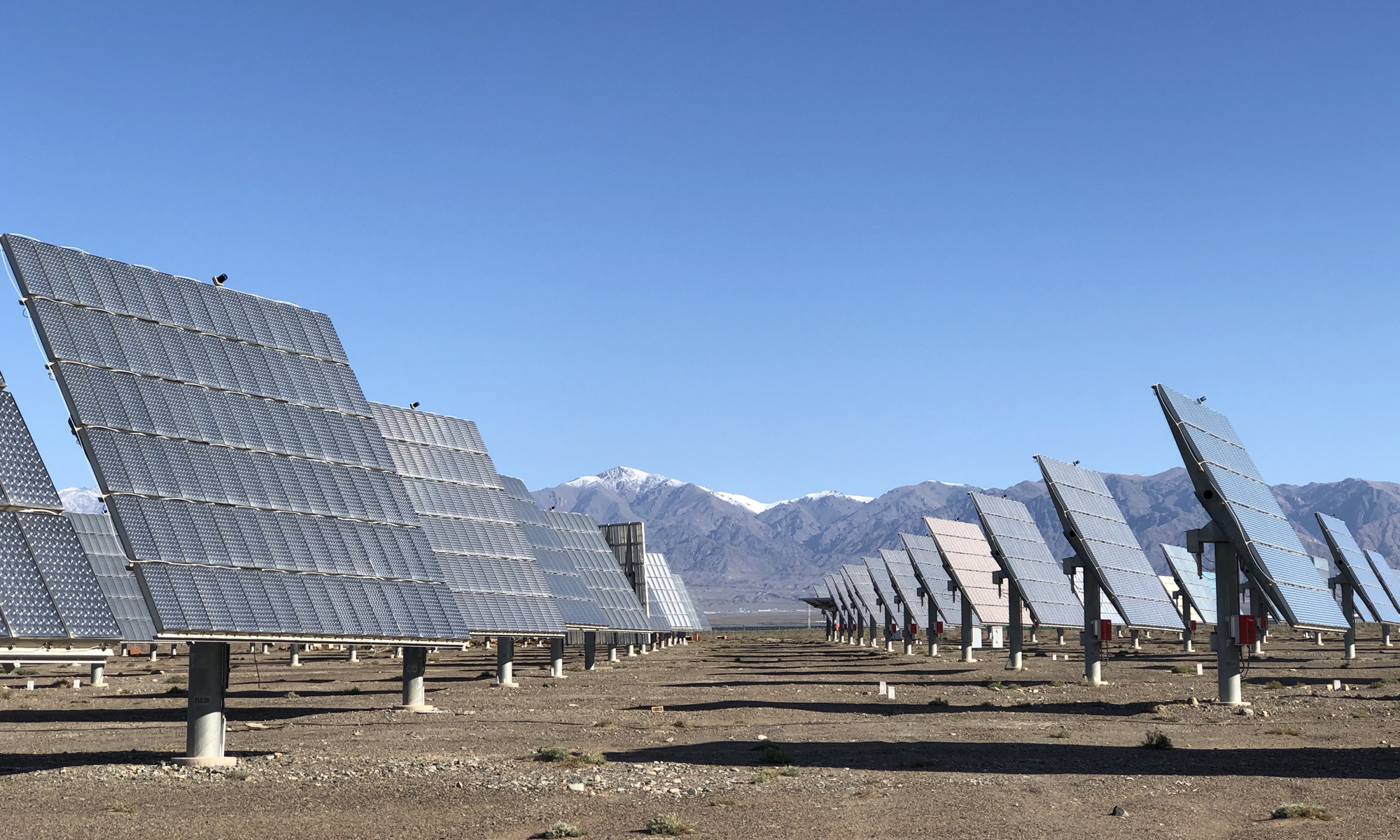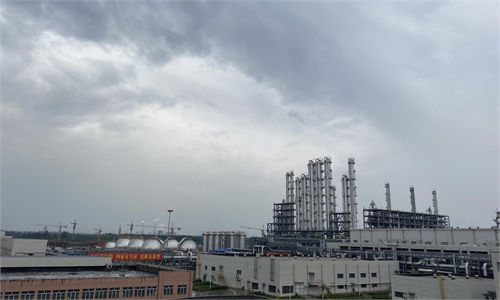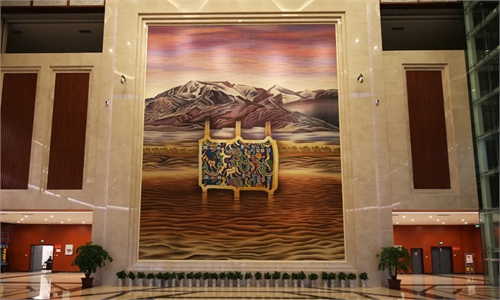News analysis: 'Forced labor' lies won't beat down Xinjiang solar firms
World needs region's firms in green energy push

Solar panels made by a company in Xinjiang's Hami. Photo: Liu Xin/GT
In the city of Shihezi, a two-hour drive or some 150 kilometers northwest of Urumqi, regional capital of Northwest China's Xinjiang Uygur Autonomous Region, a factory producing polysilicon demonstrated how Chinese firms, including those in the region, rose to dominance in the global solar industry: advanced and automated factories that produce high-quality and low-cost PV products the world needs.
During a recent trip to Xinjiang Daqo facility - one of the world's largest high-purity polysilicon manufacturer, I saw humming production lines with robots and a small number of workers - in stark contrast to stereotypes and accusations of outdated production equipment and the use of "forced labor."
Over the past decade, Xinjiang has become a major polysilicon production hub in China, as the industry requires extensive amounts of energy, and that makes relatively cheaper electricity and abundant thermal power in Xinjiang appealing.
But in recent months, groundless accusations claiming companies like Daqo use "forced labor" through government-backed "labor transfer schemes" have been making noise in some global media outlets.
However, after visiting the Daqo plant in Xinjiang twice and talking to workers freely in the past month, I found no signs of "forced labor" in the factory at all. Instead, a high level of employee satisfaction and high wages at the company made it a sought-after job in the city, workers and local residents in Shihezi told me.
Ignoring both the rebuttal by Daqo executives about the baseless claim of "labor transfer schemes" and the company's open tour for media outlets and financial institutions from the West, some interest groups kept citing the cliché accusation of "forced labor" after a similar tactic on Xinjiang cotton seems have created a splash.
Following unsubstantiated charges by a US trade group and politicians, a report from the Helena Kennedy Centre for International Justice at Sheffield Hallam University in England on Friday alleged that all four polysilicon manufacturers in Xinjiang - Daqo, GCL-Poly, Xinte Energy and East Hope Group - have reported their participation in labor transfer or labor placement programs.
The US Solar Energy Industries Association initiated a "Solar Supply Chain Traceability Protocol" at the end of April, suggesting companies trace their supply chains to determine where the components in their goods are sourced.
But a crackdown on Xinjiang's solar energy industry is slightly different from that of cotton, at a time when major economies are striving to realize carbon neutrality and put climate change on the agenda. The world needs Xinjiang firms and their components in their green energy push, which is expected to see a boom in demand for solar panels is foreseeable.
Despite the impact of the coronavirus in 2020, global installed solar capacity rose 13 percent from a year earlier. The US was the second-largest PV market after China. Vietnam, Japan, Germany and South Korea followed behind.
For such a burgeoning industry churning out the energy for future, Xinjiang's significant role stood out. According to industry statistics, China's annual polysilicon output is expected to hit 480,000 tons this year, raising its global market share to 78 percent, from 50.5 percent in 2016. Xinjiang accounts for about 70 percent of China's polysilicon capacity, and also around half of the world's.
In addition to polysilicon, the other necessary components of solar panels made in China - silicon wafers, cells and PV modules - all account for 80-90 percent of global output. That means that since 2008, Chinese has established complete industry and supply chains with a group of influential giants in every segment of the PV industry. The market has demonstrated China's PV industry is too strong to be beaten down.
Given China's major role, the whole global industry chain could be at risk if geopolitics is involved. Following the rising scrutiny by the media and trade groups, the country's PV sector is facing continuous hits from some anti-China forces in the West.
Under such conditions, and with growing uncertainty, some companies along the supply chain are adopting swiftly by seeking to diversify their production bases. Some are taking the initiative to debunk the groundless Western smearing of the industry.
In recent years, Chinese PV products have withstood investigations in many major overseas markets, including trade remedy investigations, anti-dumping investigations and anti-subsidy investigations.
But even so, the country is still the world's largest supplier of PV products, which proved the world is dependent on China-made, high-quality and low-cost PV products. It also shows that the world relies on China's participation in efforts to combat climate change when developing solar energy.




